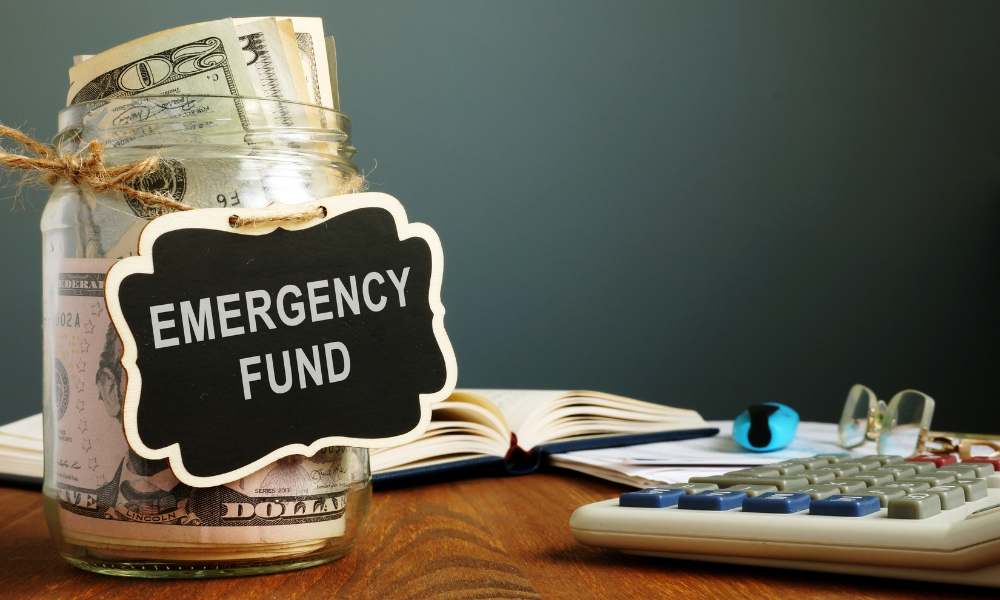
In today's unpredictable financial landscape, ensuring your financial stability is paramount. One crucial aspect of achieving this stability is Building an Emergency Fund.
In this comprehensive guide, we'll outline the strategic steps to create an emergency fund that not only safeguards your financial future but also helps you achieve peace of mind. To achieve this, you must understand How To Save Money Weekly, which is a key component of a solid financial plan.
In an era of financial uncertainties, the concept of an emergency fund emerges as a linchpin in securing your fiscal well-being. This financial safety net is not just a matter of convenience; it's a strategic pillar that can shield you from unforeseen economic tempests. Let's delve deeper into its significance:
1. Financial Safety Net
Imagine an invisible fortress that guards you against the unexpected financial storms that life can bring—medical bills, sudden car repairs, or unexpected job loss. An emergency fund serves as this very fortress, ensuring that you stand resilient in the face of these financial tsunamis without resorting to high-interest loans or drowning in credit card debt.
The essence lies in preparedness. By stowing away funds specifically for unforeseen expenses, you empower yourself to confront life's curveballs with confidence. Instead of succumbing to the pressure of accumulating debts, you possess the means to navigate these turbulent waters unscathed.
2. Stress Reduction
Beyond the monetary aspect, there exists an intangible but invaluable benefit—anxiety reduction. The mere presence of an adequate emergency fund can significantly alleviate the mental burden that financial stress imposes. Knowing that you have a financial cushion to fall back on in times of crisis can offer profound peace of mind.
When your financial foundation is fortified, you're better equipped to cope with adversity. You can direct your energy and focus toward other essential aspects of your life, unburdened by the constant worry of how to meet unexpected financial challenges.
Now that we've illuminated the importance of an emergency fund let's turn our attention to the practical steps needed to establish one. The key lies in setting a clear and attainable goal for your fund:
3. Assess Your Expenses
Begin the journey by taking a meticulous inventory of your monthly expenditures. Consider the essentials—rent or mortgage, utilities, groceries, insurance, and any lingering debts. It's this comprehensive evaluation that will serve as the bedrock upon which your fund's foundation is laid. Aim to accumulate a reserve equivalent to at least three to six months' worth of expenses.
4. Income Variability
In the world of finance, there exists a myriad of income structures, ranging from the steady flow of traditional employment to the ebb and flow of freelance or commission-based work. If your income demonstrates variability, as is often the case in such professions, it's prudent to take a conservative approach. Saving more than six months' worth of expenses can provide a safety net during leaner months, ensuring that you can comfortably cover your needs.
With your fund's objective set, let's explore the strategic maneuvers necessary to bring it to fruition:
5. Create a Dedicated Savings Account
The cornerstone of an effective emergency fund is a dedicated savings account. By establishing an exclusive account, separate from your everyday finances, you create a clear distinction that discourages impromptu withdrawals for non-emergencies. This separation ensures that your emergency fund remains untouched until it's genuinely needed.
6. Automate Savings
Consistency is the linchpin of financial success. To maintain a consistent inflow into your emergency fund, set up automatic transfers from your primary account. Treat this financial commitment as you would any other monthly bill. By automating your savings, you establish a disciplined approach that steadily augments your fund without requiring constant manual intervention.
7. Gradual Buildup
Rome wasn't built in a day, and neither is a substantial emergency fund. Understand that this is a gradual process, one that doesn't necessitate immediate accumulation. Instead, set realistic milestones—perhaps saving a fixed percentage of your income each month. As your financial situation evolves and improves, incrementally increase these contributions.
8. Windfalls and Bonuses
In the realm of personal finance, unexpected windfalls and bonuses can serve as potent accelerators in reaching your emergency fund objectives. Whether it's a tax refund, an unexpected work bonus, or other unexpected financial gains, directing these funds toward your emergency fund can expedite your savings goal. This prudent utilization of unexpected funds aligns with the broader goal of fortifying your financial stability.
Your journey toward financial preparedness doesn't end with the establishment of your emergency fund. It's a dynamic process that requires periodic review and maintenance:
9. Periodic Review
Life is fluid, and so is your financial situation. As life events unfold—marriage, parenthood, homeownership, and more—your financial needs may evolve. Regularly reassess and adjust your emergency fund target to align with these changing circumstances. By keeping your fund in sync with your life, you ensure that it remains an effective safety net.
10. Replenish After Use
In the event of a genuine emergency that necessitates tapping into your emergency fund, make it a priority to replenish what you've used as swiftly as possible. This proactive approach ensures that your financial safety net is always at the ready, providing continuous protection against unforeseen challenges.
In summation, the construction of an emergency fund transcends mere financial prudence it embodies a profound commitment to your fiscal well-being. This reservoir of financial resilience, guided by the keyword Building an Emergency Fund, offers not only peace of mind but also unwavering security to confront the unexpected with unyielding confidence.
As you embark on this journey, diligently following the strategies outlined in this guide, you are setting yourself on a path to long-term financial stability—a path that empowers you to seize life's opportunities and weather its storms with equal aplomb.